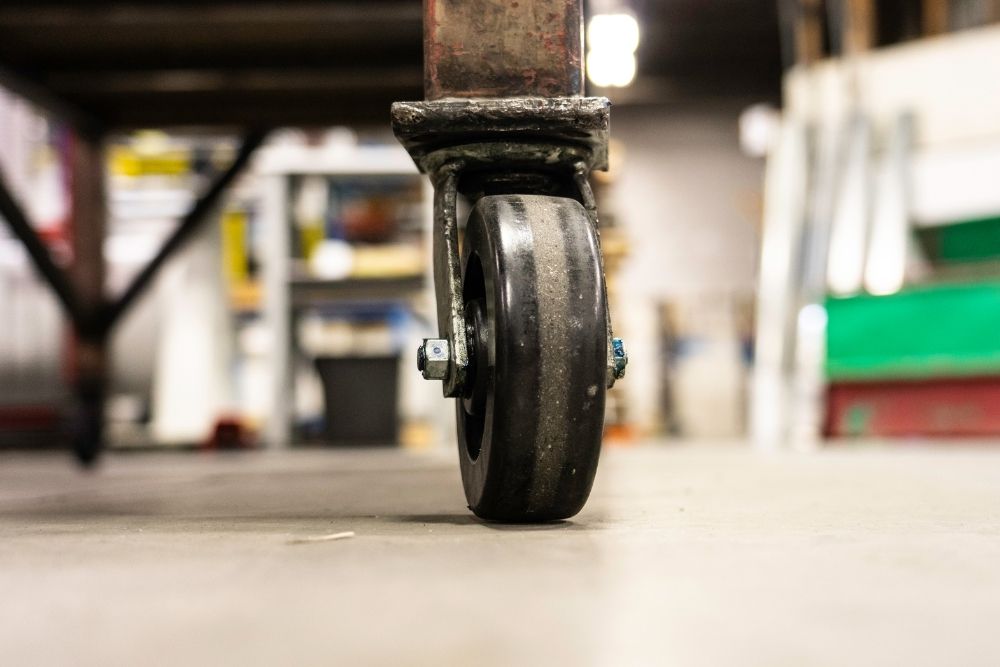Swivel castors play a crucial role in industrial settings, offering flexibility and ease of movement for a wide range of equipment. Whether it's moving heavy machinery or transport trolleys, swivel castors ensure that industrial tasks can be completed efficiently. However, proper usage and safety precautions are essential to prevent accidents and ensure the smooth operation of your equipment. In this guide, we’ll explore key safety tips for using swivel castors and swivel wheels in industrial environments.
Understanding Swivel Castors and Swivel Wheels
Swivel castors differ from fixed castors because they offer 360-degree rotation, providing greater manoeuvrability in tight spaces. This flexibility makes them ideal for industrial settings where equipment needs to be moved quickly and frequently. However, because swivel castors allow such a high degree of movement, it’s crucial to follow best practices for safe operation.
1. Choose the Right Swivel Castors for Your Application
Choosing the correct swivel castors for your industrial application is the first step in ensuring safety. The wrong size or load capacity can lead to instability, tipping, or failure.
- Load Capacity: Always check the load capacity of your swivel castors. The castors should be able to support the total weight of the equipment plus any additional load. For heavy-duty applications, choose swivel castors with high-load ratings.
- Wheel Material: Select the right material for your swivel wheels based on the floor type and work environment. Rubber wheels are excellent for protecting floors and providing a cushioned ride, while nylon or steel wheels may be better suited for tougher surfaces like concrete or metal.
2. Regular Maintenance is Key
Like any equipment in industrial settings, swivel castors require regular maintenance to perform optimally and safely. Without proper care, worn or damaged swivel wheels can result in poor manoeuvrability, instability, or even accidents.
- Check for Wear and Tear: Inspect your swivel castors regularly for signs of wear, such as cracks, flat spots, or uneven tread. Damaged wheels can lead to poor performance or unsafe operation.
- Lubricate Moving Parts: The swivel mechanism needs to rotate smoothly. Apply lubricant to the bearings and other moving parts to keep the castors functioning properly and to reduce friction.
- Tighten Loose Fittings: Check the fittings and bolts securing the castors to the equipment. Loose fittings can cause instability and increase the risk of accidents.
3. Ensure Proper Load Distribution
One common mistake in industrial settings is uneven load distribution on equipment fitted with swivel castors. This can cause one or more wheels to bear more weight than they are designed to handle, leading to castor failure or equipment tipping.
- Evenly Spread the Load: Distribute the load evenly across all swivel wheels. Overloading one side of the equipment can result in castor damage or instability.
- Monitor Load Capacity: Never exceed the specified load capacity of the swivel castors. If heavy loads are a frequent part of your operations, opt for heavy-duty castors designed to handle the extra weight.
4. Use Brakes or Locks for Stability
Swivel castors offer great manoeuvrability, but sometimes you need equipment to stay in place. In these situations, it's essential to have castors equipped with locks or brakes.
- Locking Mechanisms: Choose swivel castors with built-in locking mechanisms that can stop both the wheel and the swivel rotation. This prevents the equipment from moving unexpectedly and ensures safety during stationary tasks.
- Parking Brakes: If your equipment remains stationary for extended periods, using parking brakes on the swivel castors will provide added stability and prevent accidental movement.
5. Train Employees on Proper Usage
No matter how good the equipment is, improper handling can lead to accidents. It's important to train employees on how to safely operate equipment with swivel wheels in industrial settings.
- Proper Handling Techniques: Teach workers to push, not pull, equipment fitted with swivel castors. Pushing allows for better control, reduces strain on the user, and lowers the risk of tipping.
- Be Aware of the Load: Workers should be aware of the load capacity of the equipment and avoid exceeding it. Overloading can result in castor failure, causing the equipment to become unsafe to manoeuvre.
6. Choose Swivel Castors Designed for Your Environment
Different work environments require different types of swivel castors. For example, if you’re operating in a warehouse with smooth concrete floors, you might need swivel wheels that offer high durability and low rolling resistance. On the other hand, if your equipment is exposed to moisture, chemicals, or uneven surfaces, choose swivel castors made from corrosion-resistant materials like stainless steel or polyurethane.
Conclusion
Swivel castors and swivel wheels are essential components for keeping industrial operations running smoothly and safely. However, to ensure their longevity and functionality, it’s crucial to choose the right castors, perform regular maintenance, and follow proper safety procedures. Whether you're outfitting a warehouse trolley or heavy machinery, keeping safety at the forefront ensures that your workplace remains efficient and hazard-free.
For a comprehensive selection of high-quality swivel castors and swivel wheels, visit Castors-Online.co.uk
and explore our range of durable and reliable products designed for industrial applications.










